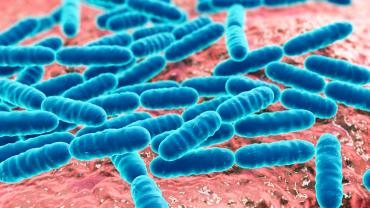
Research indicates that a healthy vaginal microbiome contains several strains of Lactobacillus that have unique properties to support vaginal health. Certain strains of Lactobacillus help maintain the vaginal microenvironment by producing lactic acid, hydrogen peroxide, and other chemicals that may target unwanted bacteria. Lactic acid helps maintain an acidic vaginal environment, with a pH between 3.5 and 4.5, that helps prevent the growth of unwanted bacteria. Hydrogen peroxide is a harmful molecule to most anaerobic bacteria. Certain Lactobacillus species can also strongly adhere to the vaginal epithelium and help competitively exclude unwanted bacteria. Reductions in the amount of Lactobacillus species that produce hydrogen peroxide and lactic acid contribute to conditions of vaginal dysbiosis such as bacterial vaginosis (BV).
BV is the most prevalent disorder of the lower genital tract in individuals of childbearing age. It often involves the replacement of Lactobacillus-predominant vaginal microflora with anaerobic bacteria. Increases in anaerobic bacteria are associated with increases or imbalances in the pH environment and the increased production of certain molecules that cause malodorous discharge and the shedding of vaginal epithelial cells caused by metabolic byproducts.
A BV-dominant vaginal microbiome may result in the proliferation of Lactobacillus-inhibiting bacteria and the formation of biofilms which may promote bacterial persistence and enhanced resistance to host defense mechanisms. It may also promote the presence of unwanted viruses and sequester manganese, a trace mineral that is necessary for the proliferation of Lactobacillus strains.
A clinical study involving 27 individuals with BV and 46 controls identified bacterial strains in vaginal fluid through ribosomal DNA analysis. In individuals without BV, between 83% and 100% of strains were identified as Lactobacillus species. In addition, samples from healthy controls contained between 1 and 6 (mean 3.3) bacterial species per person. This is in contrast to participants with BV, where 9 to 17 (mean 12.6) bacterial species were identified per person, and many species were only identified in those with BV.
Changes in the vaginal microflora have been observed in certain disorders related to the menstrual cycle, fertility, and ovarian health. Other gynecologic and urogenital disorders have also been associated with BV and vaginal dysbiosis.
Evidence suggests that certain probiotics may help support the repopulation and balance in the vaginal microbiome. A meta-analysis of clinical studies investigated the efficacy of four Lactobacillus strains (L. crispatus, L. gasseri, L. jensenii, L. reuteri). Supplementation with these four Lactobacillus strains helped support a statistically significant reduction of Nugent scores (a clinical measure of BV symptoms) as compared to placebo upon subgroup analysis. More studies are needed, however, before clinical conclusions can be made.
Evidence suggests that certain strains in the Lactobacillus genus may help support vaginal health. They may help maintain a balanced pH and a healthy vaginal microenvironment. Supplemental and dietary sources of probiotics, such as kimchi, kombucha, sauerkraut, and yogurt, may promote vaginal microbial balance and vaginal comfort.
By Dr. C. Ambrose, ND, MAT